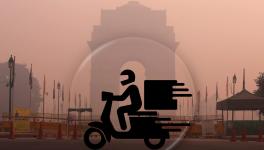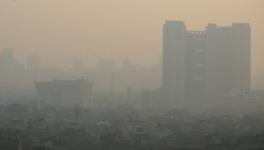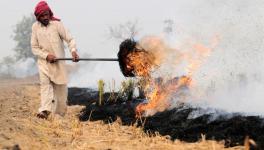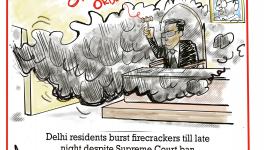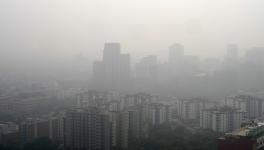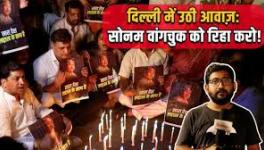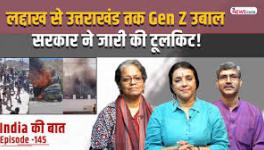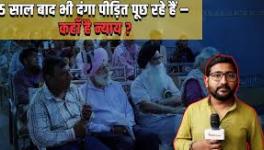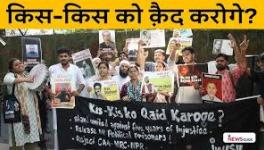Will Delhi's Air Replicate London's 'Great Smog'?
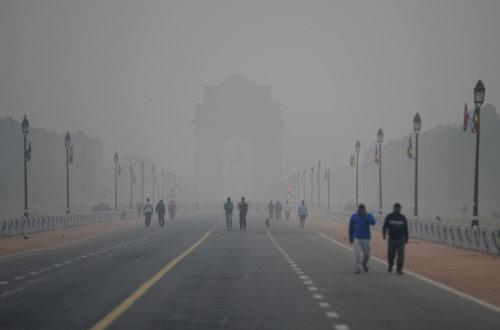
On a cold December morning some 65 years ago, a seemingly dense fog engulfed the City of London. People went about their business as usual as it was a common occurrence at that time. It didn't take long, however, for Londoners to realise that this was no regular fog but a toxic combination of smoke and fog -- smog.
That Great Smog of 1952 -- often called "The Big Smoke" -- killed an estimated 12,000 people and had long-term ill-effects on the health of the city's residents.
Last week, AIIMS Director Randeep Guleria compared the alarming pollution scenario in Delhi with London's 1952 crisis. Environment experts agree that if serious steps are not taken, Delhi may soon face a similar kind of "air pollution disaster" which London did 65 years ago.
The Big Smoke did not happen in London all of a sudden. There were signs -- alarming signs -- as even before the 1952 crisis, the British capital experienced smog events several times in the past which they called "pea soupers". Those were similar to what Delhi may be experiencing today.
Just as in Delhi today, the smog engulfed London, reducing visibility and causing discomfort to children and the elderly and to those suffering from respiratory diseases. The number of patients reporting to hospitals with respiratory ailments used to increase at that time of the year.
But it took the air pollution disaster of 1952 for the British government to acknowledge the magnitude of the crisis and take a slew of measures to undo the damage -- including passage of the Clean Air Act 1956 and shift from coal-based fuel to alternative fuels.
While some experts wonder if Delhi is also waiting for a disaster like The Big Smoke to take stringent measures to improve the city's air quality, others feel the disaster is already upon us and would have long-term health impacts on Delhi's residents.
Eminent environment expert C.R. Babu said what we face in Delhi today is much more serious than the London smog.
"In London, smog killed because people faced breathing problems. But the toxins in Delhi's air could lead to long-term problems and chronic health disorders, and not just short-term health issues," Babu told IANS.
"Vehicular exhausts have large amounts of polycyclic aromatic hydrocarbons which are toxic in nature and are also carcinogenic," he added.
Babu warned that the situation would become much worse if the government didn't act fast. "Just like the London incident was called an 'air pollution disaster', what we have today is a similar disaster in Delhi. But in Delhi's case, people will suffer for longer periods."
"It is time for the government to think deeply about long-term planning for preventing such air pollution disasters," he added.
According to AIIMS Director Guleria, the alarming pollution level in the city has already led to an at least 20 percent increase in the number of persons complaining of cardiac and respiratory problems.
He also warned that about 30,000 persons may lose their lives in the National Capital Region alone due to the current pollution levels, numbers which, he said, he had extrapolated from the number of hospital admissions.
Vivek Chattopadhyay, Programme Manager at the Centre for Science and Environment, said it could be a watershed moment for Delhi and should not be taken lightly.
"Ultimately, we are dealing with a health crisis, not just visibility problems," Chattopadhyay told IANS. "There are huge health costs and, as per estimates, air pollution is costing India around three percent of the GDP in terms of health costs."
Chattopadhyay said that the recurring smog incidents of Delhi are major warning signals and just as was the case of London before the big disaster, the powers that be in Delhi may also be unaware of the magnitude of the problem.
"The problem is that our health system won't be able to tell how many are affected. We need a comprehensive data recording system. Hard statistics are needed about the number of cases of respiratory problems, cardiac arrests and strokes that are reported in the hospitals," he said.
As for precautionary measures, he said there was a need to introduce clean fuel for everything and a parity of laws across NCR and not just in Delhi.
"Delhi in isolation cannot remain clean. It is high time that the government woke up and an inter-state meeting was held to collectively solve the problem. It has become a recurring thing and there is a need to change the way we work. The time for action is now," he said.
R. Suresh, Fellow and Area Convenor at TERI (The Energy and Resource Institute), pointed out that Delhi's response to the crisis has so far been reactive, not pre-emptive, which needed to change.
"While the weather is not in our control, what we can control are ground-level emissions. What we have witnessed so far is that we face a crisis every year and then the government reacts. We need a long-term solution," Suresh told IANS.
"We know that November-December is the peak time for air pollution. So our precautionary measures should happen before November. Why wait for Diwali to ban crackers? For next year, measures should be taken now."
While Suresh said that the main problem was stubble burning in the neighbouring states as well as construction and road dust, Babu maintained that the exhaust from automobiles is more dangerous.
"You have to regulate automobiles -- stringent measures are needed. For example, Singapore has decided to stop registration of all new vehicles. Why can't we do that in Delhi? Almost every household has a vehicle today. More than the need, it has just become a symbol of social status," he said.
(Vishav can be contacted at vishav@ians.in)
Disclaimer: The views expressed here are the author's personal views, and do not necessarily represent the views of Newsclick.
Get the latest reports & analysis with people's perspective on Protests, movements & deep analytical videos, discussions of the current affairs in your Telegram app. Subscribe to NewsClick's Telegram channel & get Real-Time updates on stories, as they get published on our website.










